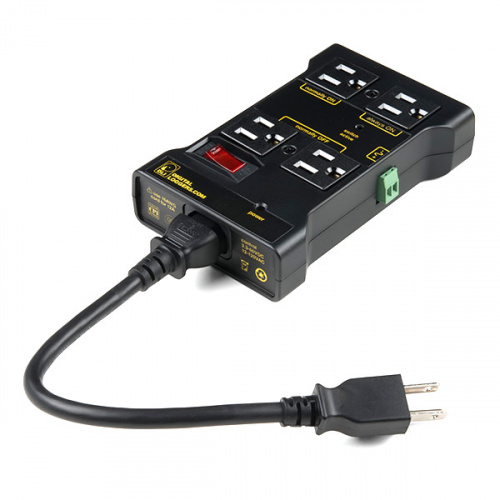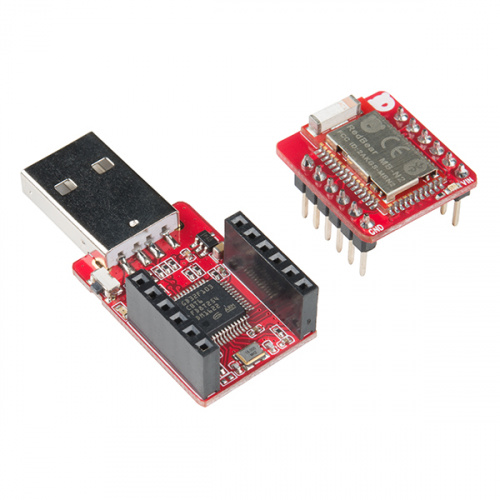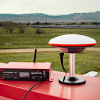Hello, and happy Force Friday, everyone! This week we are very happy to bring you multiple new products fresh and ready to use, with a twist on one of them. Today we introduce the IoT Power Relay v2, revisions to the RedBearLab BLE Nano and the Nano Kit, and a brand-new limited-edition shirt to celebrate this special day. It's a big week with big products, so let's get started and take a closer look!
Only available for a limited time!
These are our brand-new "Thank the Maker" shirts. These lightweight shirts have been emblazoned with the immortal words of our favorite golden robot, thanking each of you makers out there. The back of the tee features our SparkFun emblem and our slogan: "Start Something."
These shirts are available in sizes small to XXL and only for a limited time. When that time is up, the "Thank the Maker" shirt will be replaced with the next design and gone forever. Get it while you can!
Look at all those outputs!
Do you want to control a standard wall outlet device with your microcontroller, but don’t want to mess with the high-voltage wiring? The IoT Power Relay is a controllable power relay, equipped with four outputs, that helps you create an Internet of Things (IoT) project with safe, reliable power control. With the IoT Power Relay you can easily control the power going to a device with an Arduino, Raspberry Pi or other single-board computer or microcontroller. It provides an alternative to the Power Switch Tail.
The BLE Nano v2 from RedBearLab is the smallest Bluetooth 4.2/5.0 Low Energy (BLE) development board on the market. With the DAPLink USB included in the BLE Nano Kit v2, you'll be able to deploy firmware to BLE Nano v2 even more easily. At each BLE Nano's core is a Nordic nRF52832, an ARM Cortex-M4F System on Chip (SoC), plus BLE capable of running at 64MHz with ultra-low power consumption. The RedBearLab BLE Nano also supports numerous different wireless devices running iOS 7/8, Android 4.3 or higher, and Windows Phone 8.1.
That's it for this week. We are very excited to introduce our new shirts and, as it says in the video, if you don't like them, that's OK. A new design will be out soon. As always, we can't wait to see what you make with these parts! Shoot us a tweet @sparkfun, or let us know on Instagram or Facebook. We’d love to see what projects you’ve made!
Thanks for stopping by. We'll see you next week with even more new products!












Did anyone else have the idea that if there is a normally off, normally on, and always on socket, then why isn't there any always off socket? Doh!
There is an always off socket off to the side. Just leave your cord laying off to the side of the unit and it will be always off :)
Anyone else have a deep desire to slide the light sensor under the lamp...
Did you watch the video all the way to the last couple of seconds?
I wonder how much of the frequency is due to the slow on/off response of heating up a coil of tungsten (the light response looks like a standard incandescent lamp) vs the nearly instant (well much faster) on/off speed of an LED bulb.
Would be fun to try different bulb types and calculate (could be internal to the Arduino program) frequency. Recognizing, of course, that at some point the frequency attainable will be limited by the mechanical relay in the IoT Power Relay (due to both mechanical movement speed limitations of the contacts, and the inductance of the relay coil).